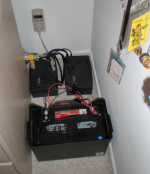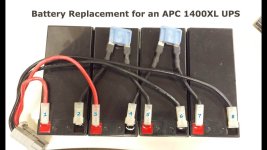VERAULT
Veteran Member
- Joined
- Jan 30, 2012
- Messages
- 9,999
So I have a few older APC UPS systems and lots of extra batteries. Where I live we get frequent brownouts. I have a SMART UPS 1500 with two batteries in it currently but I wanted to try wiring in some external batteries to it. I am assuming I need to add them in parallel as its currently running off the paired 24v battery system but I don't know for sure. Can I just add two more batteries in series to the two inside the unit?
I would love to here from anyone having experience with this type of thing. I know there are lots of articles about people connecting car batteries etc and I am not going that route. These are 12V UPS batteries that are not new by any means, I just want to get all the use out of them before they permanently deplete.
Would love anyone's take on on this.
There are tons of "tid-bits" on the internet about this but what is safe?:



I would love to here from anyone having experience with this type of thing. I know there are lots of articles about people connecting car batteries etc and I am not going that route. These are 12V UPS batteries that are not new by any means, I just want to get all the use out of them before they permanently deplete.
Would love anyone's take on on this.
There are tons of "tid-bits" on the internet about this but what is safe?:



